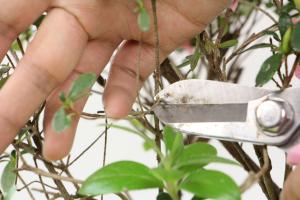How to Plant Peonies
Peonies are beautiful flowering plants that can add a lovely touch to any garden or landscape. However, planting peonies can be a bit tricky if you don't know what you are doing. In this article, we will share with you the basic steps on how to plant peonies and keep them healthy and thriving.
Choosing the Right Location
The first step in planting peonies is choosing the right location. Peonies need a spot in your garden that gets plenty of sunlight, but they must also be protected from the hot afternoon sun. It's best to choose a spot that receives morning sun or dappled shade in the afternoon. You'll also want to make sure the area is well-drained and the soil pH is between 6.0 and 7.0.
Preparing the Soil
Once you have chosen the right location, it's time to prepare the soil. Peonies need rich, fertile soil that's high in organic matter. To prepare the soil, add compost or aged manure to the planting area and work it into the top 12 inches of soil. You can also add a general-purpose fertilizer to give your peonies a boost.
Planting Peonies
Now it's time to plant your peonies. Dig a hole that's about 2 feet wide and 2 feet deep. Add a small amount of bone meal or superphosphate to the bottom of the hole. Next, carefully spread the roots of the peony plant in the hole, making sure that the eyes of the plant (where new growth will appear) are facing upwards and are about 2 inches below the soil surface. Fill the hole with soil and pack it down gently.
Watering and Mulching
After planting your peonies, water them thoroughly to help settle the soil around the roots. Throughout the growing season, you'll need to keep the soil moist but not waterlogged. It's a good idea to mulch around the plants with a 2-3 inch layer of organic matter, such as straw or shredded bark. Mulching helps retain moisture, keeps the soil cool, and suppresses weeds.
Caring for Peonies
Peonies are relatively low-maintenance plants, but they do require some care to keep them healthy and blooming year after year. In the spring, when the new growth appears, you'll want to fertilize your peonies with a balanced plant food. You'll also want to stake your peonies to keep them from falling over under the weight of their flowers.
In the fall, after the first frost, you'll need to cut back the foliage to the ground and remove it from the garden. This helps prevent the spread of diseases and pests. You may also want to divide your peonies every 3-5 years to keep them from getting too crowded.
Conclusion
Planting peonies may seem like a daunting task, but with the right preparation and care, you can enjoy these lovely flowers in your garden year after year. Remember to choose the right location, prepare the soil, plant your peonies correctly, water and mulch them, and give them the care they need to thrive.

 how many times do yo...
how many times do yo... how many planted tre...
how many planted tre... how many pine trees ...
how many pine trees ... how many pecan trees...
how many pecan trees... how many plants comp...
how many plants comp... how many plants can ...
how many plants can ... how many plants and ...
how many plants and ... how many pepper plan...
how many pepper plan...
































